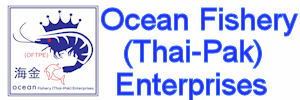Armenia is a landlocked country
with an area of 29 800 km and limited natural resources. The country
is divided into two major catchments: the Araks basin in the
southwest and the Kuri basin in the northeast. The Black Sea cannot
be reached without passing through Georgian and Turkish territory.
Access to the Mediterranean is only possible through Turkey. Towards
the east, Armenia’s route to the Caspian Sea passes through
Azerbaijan.
Fishing in Armenia
has long been of importance for both sport and commerce, and is
allowed anywhere apart from protected areas. Lake Sevan supports
extensive commercial fishing, representing 90% of fisheries.
Following the decrease in the level of the lake, the key fish
species caught have changed from Sevan trout and 'koghak' to
whitefish and goldfish (see below table). Since 1996, commercial
fishing in Lake Sevan has been based on licences and contracts
issued through the Ministry of Nature Protection.
Table: Catches of
commercial fish species in Lake Sevan (in tonnes, totalled over
five-year periods):
|
Years
|
Whitefish (sig)
|
Sevan trout (ishkhan)
|
Koghak
|
Goldfish (tsatsan)
|
Barbel (beghlou)
|
|
1966-1970
|
2692
|
895
|
-
|
-
|
21.9
|
|
1971-1975
|
3840
|
317
|
796
|
-
|
7.8
|
|
1976-1980
|
4825
|
244
|
1375
|
-
|
0.04
|
|
1981-1985
|
6158
|
2.6
|
1273
|
-
|
-
|
|
1986-1990
|
8673
|
-
|
927
|
10
|
-
|
|
1991-1995
|
4529
|
-
|
148
|
386
|
-
|
Armenian
Aquaculture Resources Information:
The country has
hundreds of water bodies countrywide, with 10 major natural lakes,
15 major rivers and 5 canyons. The catch from these waters is an
important element in Armenian food supply. The largest water body is
Lake Sevan, almost 100 m dep in places and lying at 1 924 m above
sea level. It is fed by 28 streams but has only a single outlet.
Species found include Sevan trout, whitefish, carp and rainbow
trout. Sevan Lake trout is much in demand, not only in Armenia but
also in the Russian Federation and elsewhere. However the Sevan lake
trout is in danger due to over-fishing and serious action is needed
to saving the species.
Both capture and farmed fish contribute to Armenian fish production.
Being landlocked and without access to major rivers, fishery
potential is mainly determined by the Lake Sevan fishery.
Armenia’s continental climate favours carp farming at lower
elevation, but average rainfall is low and water supply is a
constraint in many areas. However, farmers in the Ararat Valley have
access to well water and can keep their fish in water with a stable
temperature of 11 to 15°C, independent of season. In this way, fish
grow all year round, so production potential much higher than in
areas where growth stops in the winter due to low temperatures. In
Lake Sevan, fisheries low water temperature and low natural
fertility limit fish production.
Commercial fish
farming in Armenia started in the 1950s in the Lake Sevan area,
with the construction of hatcheries for Sevan trout and coghak. The
second development was construction of pond farms for production of
table fish, mainly carp species (common, bighead, silver) and trout.
The farms were big, normally hundreds of hectares, and mostly
constructed in areas with salty soils (poor land unsuitable for
other agriculture). Water was pumped from rivers. In the 1980s, the
effects of pollution reduced the wild catch of fish, and in some
cases also negatively affected the health of fish in ponds.
Nevertheless, in this period, pond farms produced 5–6 000 t/year.





